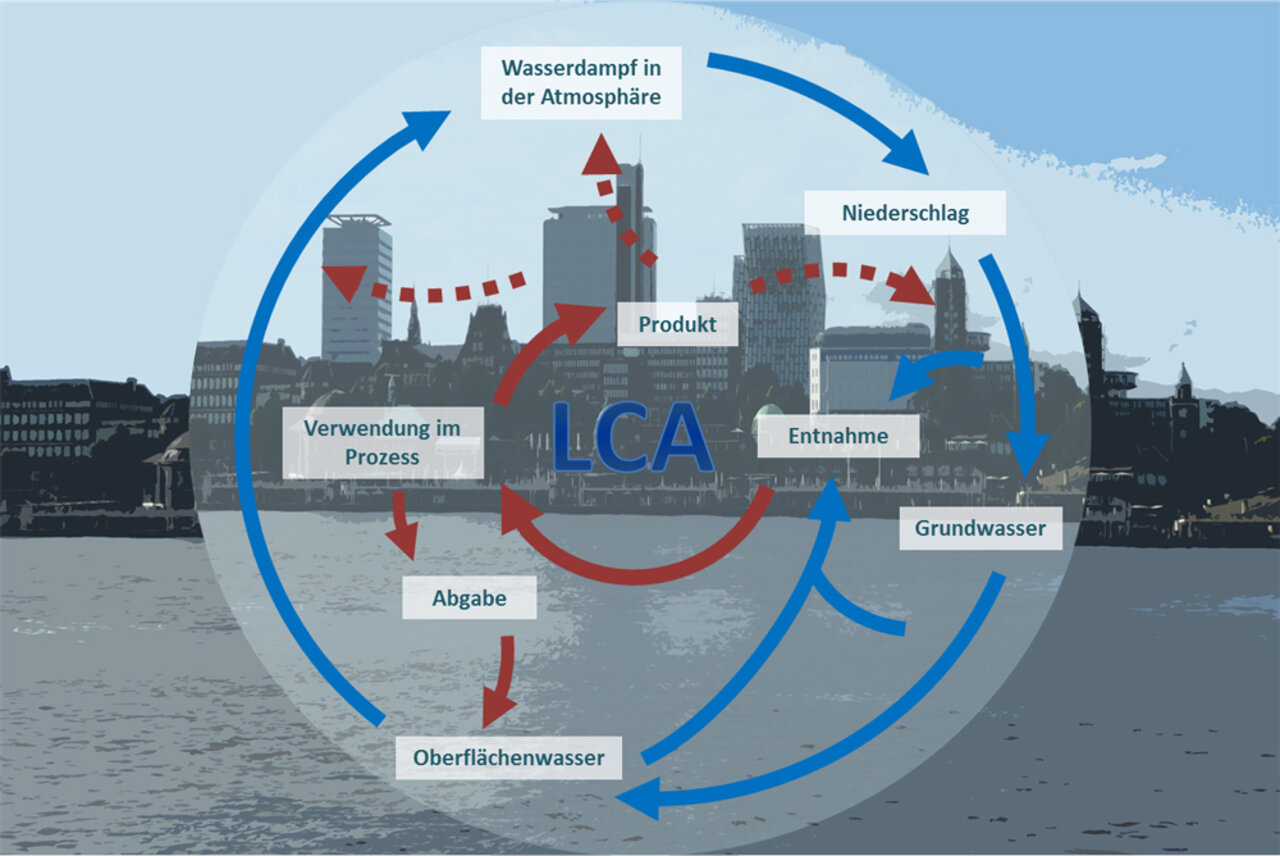Project
Water Use within Life Cycle Assessment

Development of a methodological approach to integrate the effects of water use into life cycle assessment
Supplying the world sufficiently with water in high quality is one of the most imporant environmental topics these days. Is it possible to assess the impacts of water use? If yes, how?
Background and Objective
Increasing population and increasing demand for food and feed raises pressure on natural resources. In some regions of the world especially drinking water is a scarce resource, although it is indispensable to life. Nevertheless, in different regions of the world, the perceptions of consuming one litre of drinking water can vary widely. Due to climatic factors or for technical reasons it is not everywhere provided to the same extent. For that reason it is difficult to assess the relevance and the impacts of water use with the help of a standard method. Life cycle assessment or so called footprints are suitable to assess environmental impacts of a products manufacturing, use and disposal. Available methods just estimate the amount of water use and do not consider different purposes or places of withdrawal.
Our project aims to enhance life cycle assessment method by integrating water use and its impacts. We would like to show how the regional relevance of water use can be assessed. Within the assessment also quality changes will be considered. One focus of the work lies on the assessment of water use for biomass production.
Approach
At first existing methodological attempts are investigated, compared, analysed and judged. Then a new methodical approach is developed which fill the gaps of these existing methods and better suits the desired requirements. At the end the applicability of the method and its elements is demonstrated with a case study. To guarantee the user's friendliness, we provide tables with default values and suggest using public available data bases for the calculations.
Data and Methods
In general the method of life cycle assessment allows to collect data on energy and material flows of manufacturing, use and disposal of a product and to assess their environmental impacts. Until now mostly chemical and physical effects climate impacts, acidification or eutrophication can be assessed via life cycle assessment method. To be able to assess also the consumption of water we develop the existing methods within the scope of this project.
Our Research Questions
We formulated the following research questions: Is it possible to assess the use of water in the regional context in terms of used amounts as well as in terms of qualitative changes? How such an assessment can be implemented with easily accessible data, in a simple manner? Is it possible to develop a structure which enables the user to consider different cases of water use as well as regional specifics?
Results
The evaluation of existing literature showed a lack of suitable methods which are suitable to assess water use for natural production processes within the scope of a life cycle assessment study. From this a bad comparability of technical and biological products is resulting.
Our new method proposal offers the possibility to record different types of water use for products, services or processes sophisticatedly and to and assess their regional meaning individually. For it we have chosen a midpoint approach. This means, particular impacts are investigated and not the impacts on so-called endpoints. Endpoints are located at the end of an effect chain and are the part of the environment to which effects apply. Such endpoints can be for example ecosystems, natural resources or human health. Due to very complicated interrelations of the different impacts it is difficult to assess effects at endpoints within such a method expansion.
The method compiled within the project consists of three main steps. Step one is carried out within the life cycle inventory phase. It enables the user to record the quantities of the different withdrawn water types, the place of withdrawal as well as the released quantities of water and if necessary the place of their release.
In the second step we assess the withdrawal in the context of regional water availability. While it is judged in the third step how and in which magnitude the water quality was altered on the basis of benchmarks and in comparison to the initial status.
The structure for the assessment corresponds to a sort of decision tree: Its branches lead to different assessment procedures which are to be used in the respective case to assess the consumed amounts of water. Within the structure we can assess and compare the consumption of water for technical and biological products.






